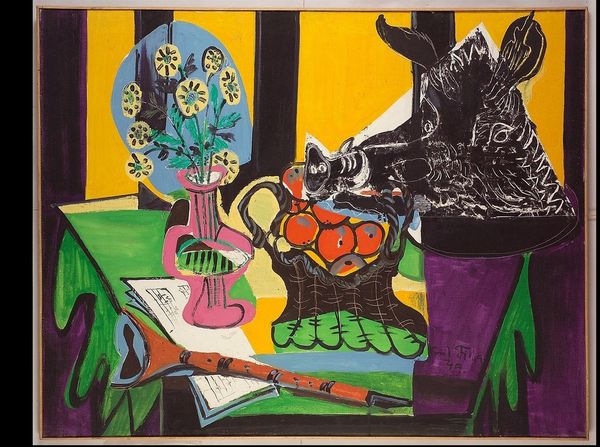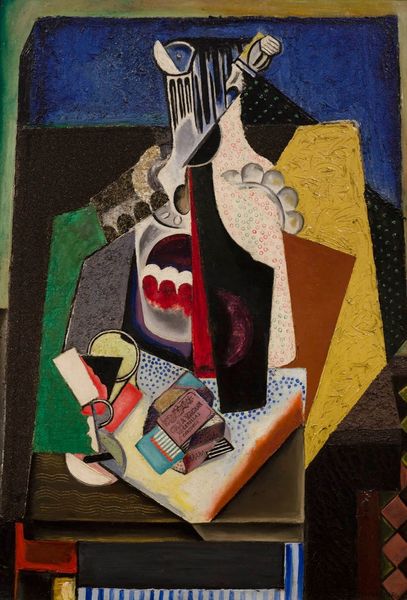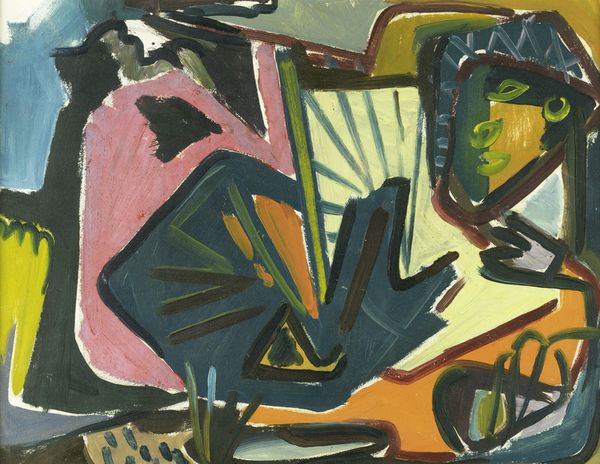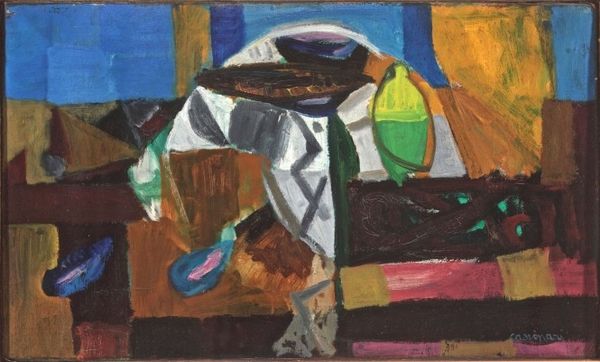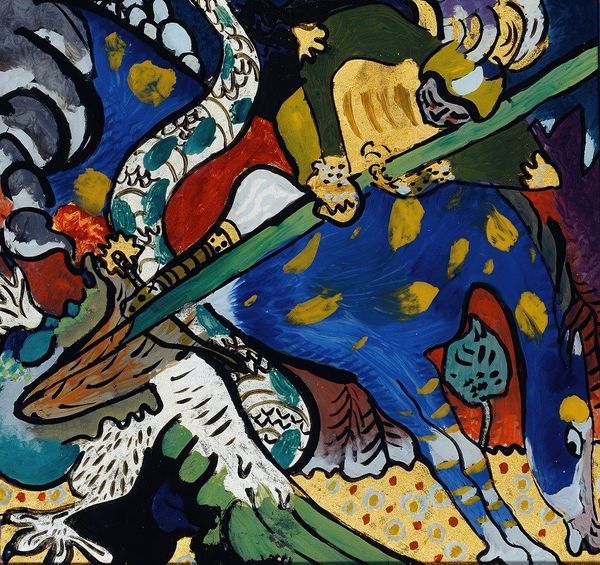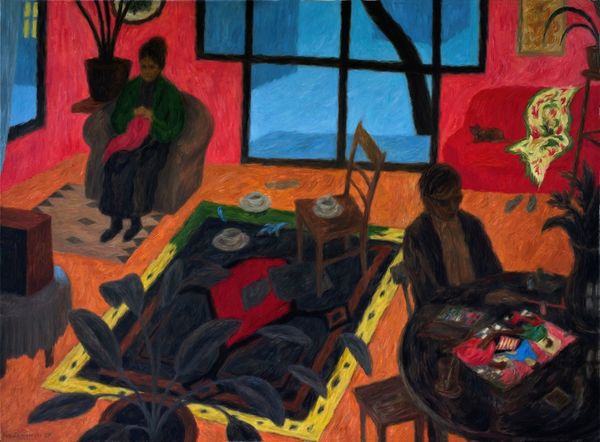
mixed-media, tempera, painting, paper
#
portrait
#
mixed-media
#
narrative-art
#
tempera
#
painting
#
harlem-renaissance
#
figuration
#
paper
#
form
#
line
#
genre-painting
#
modernism
#
regionalism
#
realism
Copyright: Jacob Lawrence,Fair Use
Curator: Here we have Jacob Lawrence’s "The Shoemaker," created in 1945. Lawrence employs tempera on paper to capture a scene of everyday life. Editor: The painting immediately strikes me with its bold geometry and contrasting colors. There's a wonderful tension between the flatness of the picture plane and the illusion of depth created by the receding lines of the room. Curator: Lawrence, a key figure of the Harlem Renaissance, often depicted the lives and struggles of African Americans. This genre painting is a glimpse into a working-class occupation, showcasing the dignity of labor. It reflects the social realism movement popular at the time, focusing on accessible themes for a wider audience. Editor: I see what you mean, yet notice how he abstracts the human figure and the environment. It’s as if he’s broken down the scene into essential shapes and colors. Look at the strong diagonal lines and the way the hands and tools are emphasized. It directs the viewer’s attention and dictates rhythm in the painting. Curator: Precisely. Lawrence was part of a generation exploring new artistic languages while addressing issues of race and class. "The Shoemaker" demonstrates this duality perfectly. The repetitive forms of shoes along the wall and those scattered about aren't mere representation but elements in constructing a narrative of production. Editor: It also creates a visual metaphor. It is the tension between order and chaos: neatly arranged items hanging or displayed versus the sprawling assortment along the work surface, the sharp precision of the crafted versus the scattered array of works in progress. Curator: The choice to present a seemingly mundane scene is, in itself, a political act. Lawrence elevated the lives of ordinary people, acknowledging their contributions to society during and after World War II. Editor: Indeed. In formal terms, Lawrence flattens and simplifies, moving towards the abstract, yet retains legibility and visual delight in what appears otherwise simple. This careful balance of form and subject makes "The Shoemaker" so enduring. Curator: I appreciate your attention to those forms, which indeed carry significant weight. Together, these features encapsulate the essence of Lawrence’s approach. Thank you. Editor: And thank you; analyzing its historical context has shed even more light on Lawrence's methods.
Comments
No comments
Be the first to comment and join the conversation on the ultimate creative platform.
